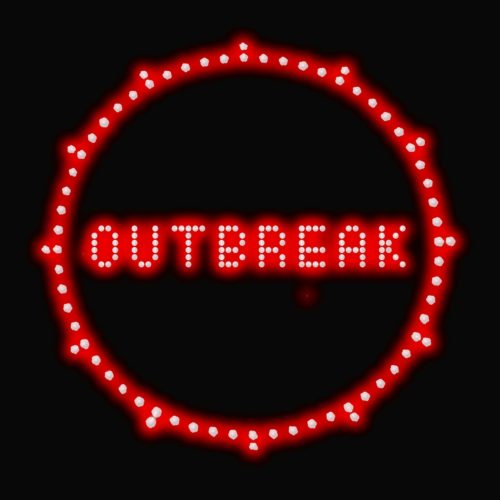
FIVE FACTS YOU REALLY NEED TO KNOW ABOUT THYROID CANCER
Welcome back everyone! It’s another #FACTUAL FRIDAY and time to examine something called the “epidemic of thyroid cancer.” You see, according to several recent news reports thyroid cancer is becoming the most diagnosed cancer in the world. In fact, it’s been reported by some sources as being of “epidemic proportions.”
Now, the word “epidemic” comes from the Greek epi and demos, which together mean “upon or above the people.” Today epidemic is a term used to describe “a rapid spread of an infectious disease to a large number of people in a given population within a short period of time.”
Of course, thyroid cancer is not an infectious disease. Nor is it occurring in populations over a very short period of time. Moreover, according to The International Agency for Research on Cancer (IARC) and Italy’s Aviano National Cancer Institute this reported “epidemic” is, in fact, mainly the result of over-diagnosis driven by new technologies.
So, here’s what these two agencies did. First, they gathered data from the cancer research department of the United Nations. This data came from twelve high-income countries in which thyroid cancer has become common. And over the years, the study noticed that the high amount of thyroid cancers reported in these twelve countries appeared to coincide with the introduction of ultrasonography for the thyroid glands.
To be sure, these ultrasounds found anomalies in the glands. But, up to 90 percent of those found in recent decades were growths “very unlikely” to cause any symptoms at all – let alone death. In addition, the use of CAT scans and magnetic resonance imaging or MRIs are adding to the detection of many non-lethal anomalies in the thyroid glands of healthy people of all ages.
For example, from 2003 to 2007 our team of researchers estimated that 90 percent of reported thyroid cancer cases in South Korea were due to over-diagnosis. During this same period, they estimated that 70 to 80 percent of the cases in Australia, France, Italy and the United States were due to over-diagnosis. And, they found that 50 percent of thyroid cancer cases in Japan, the Nordic countries, England and Scotland were also due to over-diagnosis of harmless anomalies.
All right – so what do we do? How do we protect ourselves from harm without creating more harm? Let’s start here:
FIVE FACTS YOU NEED TO KNOW ABOUT THYROID CANCER:
- GENDER AND AGE. For reasons unknown, women are approximately 3 times more likely than men to develop diseases of the thyroid, including cancer. Moreover, women are typically diagnosed in their 40s and 50s while men are typically diagnosed in their 60s and 70s.
- HEREDITY. Several inherited conditions can contribute to the development of thyroid cancer. These include an anomaly in the gene known as RET, familial adenomatous polyposis or FAP and Cowden disease.
- FAMILY MEDICAL HISTORY. This, of course, goes hand in hand with heredity. Individuals with a first-degree relative (a parent, sibling or child) with some form of thyroid cancer are more likely to develop this cancer themselves.
- CHILDHOOD RADIATION TREATMENTS. Radiation to the neck and head during childhood increases one’s risk for thyroid cancer. In the past, conditions such as acne, ringworm and enlarged tonsils were treated with radiation. More common today, lymphoma, Wilms tumor and neuroblastoma in children often are treated with radiation, which increases the risk for a subsequent thyroid cancer. Exposure to radiation as an adult carries much less risk.
- LACK OF IODINE. Diets low in iodine also increase one’s risk for thyroid cancer. In the industrialized countries of the world a lack of iodine in not usually a problem because it’s found in most table salts. However, more table salts without iodine are now being offered in which case, iodine needs to be obtained from another dietary source.
So, let’s review. Yes, it appears that the apparent and reported increase of thyroid cancer around the world may be greatly exaggerated. Between 50 to 90 percent of these cases are believed to involve harmless, non-lethal tumors and anomalies of the thyroid.
BUT, if any of the above five facts apply to you, you need to monitor the health of your thyroid carefully. Know your risks, discuss them with your primary physician and be pro-active in your healthcare regimen. As I always say, “Don’t be Surprised – be Prepared.”
I hope this information helps a bit. I’d like to thank our friends at IARC, the Aviano National Cancer Institute and the United Nations for their hard work and diligence – and for bringing clarity to a troubling issue.
And thanks to you, my friends, for joining me again 🙂 Until next time, stay in GOOD HEALTH and . . .
TAKE THE COURSE AND TAKE CHARGE!!
Time to Review: THE SINGLE SOURCE CANCER COURSE, Volume 1, Medical Treatments/Conditions, pgs. 69-75.



Leave a Comment